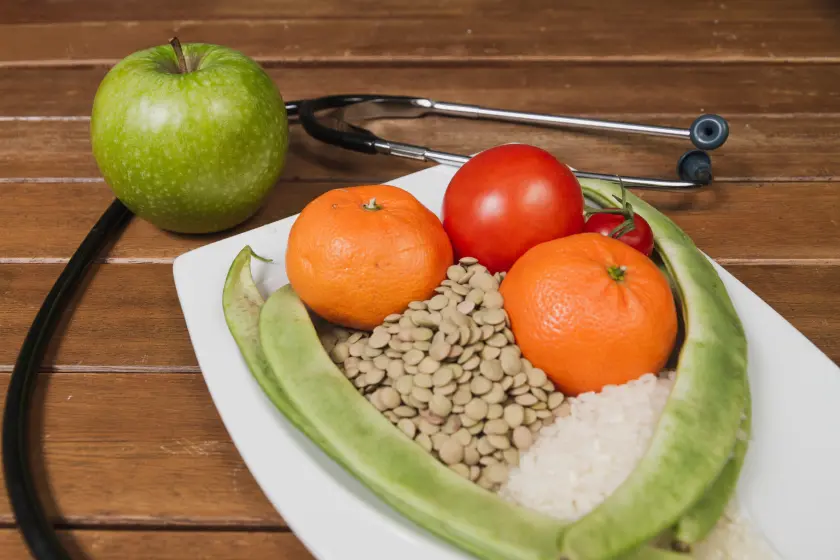
What Is Edema?
Have you ever looked down at your feet at the end of the day and wondered why they feel like water balloons? That puffiness, tightness, or swollen look could be a sign of edema.
Edema is a condition where excess fluid gets trapped in the body’s tissues, especially in the legs, ankles, and feet. It’s not just a cosmetic concern. It can be a symptom of something deeper — poor circulation, kidney issues, or even heart problems. As a vascular surgeon, I often see patients seeking swollen legs treatment, not realizing that their diet may be making it worse or could be part of the solution.
The good news? You can manage mild to moderate edema through the right food choices, simple changes in routine, and early medical intervention. Let’s break it down.
Common Causes of Edema
Why do you swell up in the first place? The causes of edema can vary depending on your health, lifestyle, and even the weather. Here are some common edema causes I often see in patients across India:
Sitting or standing for long hours
From teachers to IT professionals, extended periods of inactivity cause fluid to pool in the legs.
High salt intake
Too much sodium in your diet makes your body hold onto water, increasing swelling.
Chronic venous insufficiency
When the veins in your legs struggle to return blood to the heart, it leads to leg edema.
Pregnancy
Hormonal changes and pressure on blood vessels can cause swelling in the legs and feet.
Medications
Certain drugs for blood pressure, diabetes, or pain relief may contribute to fluid retention.
Kidney or heart problems
These can lead to generalized edema, requiring urgent medical attention.
Role of Diet in Managing Edema
You may be surprised to learn that what’s on your plate plays a huge role in edema treatment. While medications and compression stockings help, your food habits can either support or sabotage your recovery.
That is where the concept of an edema diet comes in. Certain foods help your body flush out excess fluid, support your blood vessels, and reduce inflammation. On the other hand, some foods will only make the swelling worse.
If you are looking for a natural way to reduce edema swelling, the first place to start is your kitchen.
Best Foods to Eat to Reduce Edema
Here’s your edible toolkit to fight swelling. These foods are packed with nutrients that help the body eliminate excess fluid and improve circulation.
Leafy greens
Spinach, methi, and coriander are rich in magnesium and potassium, which help balance fluid levels in the body.
Berries and citrus fruits
Fruits like oranges, lemons, strawberries, and amla are high in vitamin C, a natural anti-inflammatory and vessel-strengthening nutrient.
Cucumber and watermelon
These are hydrating foods with a mild diuretic effect, meaning they help flush out extra water.
Garlic and onions
These household staples promote better blood circulation and reduce inflammation.
Whole grains
Brown rice, oats, and barley improve heart health and reduce water retention, which is especially helpful in leg edema treatment.
Coconut water
It’s rich in potassium and helps flush out excess sodium, a key culprit behind edema.
Turmeric
Curcumin, its active compound, is a powerful anti-inflammatory agent and can be added to warm water or meals.
Foods to Avoid If You Have Edema
Now let’s talk about the foods that are secretly feeding your swelling.
Salt-heavy snacks
Chips, namkeens, and pickles might taste great, but are sodium bombs. Salt holds water in your tissues, worsening the puffiness.
Processed and packaged foods
These often contain hidden salt and preservatives that interfere with water balance.
White bread and refined carbs
These spike your blood sugar, leading to inflammation and water retention.
Red meat and fried food
High in saturated fats, these foods can damage blood vessels and worsen efforts.
Sugary drinks and sodas
They raise insulin levels and encourage the body to retain sodium, increasing swelling.
Making even a few of these changes can improve your body’s ability to reduce edema swelling naturally.
Lifestyle Tips Along With an Edema Diet
While food plays a major role, combining your edema diet with healthy habits enhances results. Here’s what I advise my patients:
Elevate your legs
At the end of the day, raise your legs for 15 to 20 minutes. This helps drain excess fluid.
Stay active
A simple walk for 30 minutes a day improves circulation and prevents fluid from pooling.
Drink more water
Yes, drinking more water actually helps. It flushes out excess salt and toxins.
Wear compression stockings
If prescribed, these can help support your veins and reduce swelling.
Manage weight
Obesity is one of the top contributors to leg edema in Indian adults.
Avoid tight clothing
Clothes that compress your waist or legs can block circulation and worsen swelling.
Together, diet and lifestyle can dramatically improve your comfort and reduce dependence on medications for edema treatment.
When to See a Doctor
If your swelling is sudden, painful, or affecting your daily activities, don’t ignore it. Persistent edema, especially in one leg, may be a sign of a vascular problem like deep vein thrombosis or advanced chronic venous insufficiency.
Also, if your swelling is accompanied by breathlessness, fatigue, or chest pain, seek immediate medical help. These could be signs of heart or kidney issues.
You should also consult a vascular specialist if your swelling is not improving despite changes in diet and activity. Early intervention often prevents complications and leads to better results.
Conclusion
Edema may look like a harmless puffiness, but it is your body’s way of telling you something is wrong, whether it is poor circulation, kidney overload, or simply too much salt in your meals.
By choosing the right diet to reduce edema, avoiding fluid-retaining foods, and making a few lifestyle tweaks, you can manage swelling naturally and feel lighter, healthier, and more in control.
If swelling persists, get it evaluated. A good swollen legs treatment plan includes medical guidance, diet, and movement — all working together to support your healing.
FAQs
Elevate your legs, reduce salt, stay hydrated, and walk regularly. For faster relief, a vascular consultation may be needed for proper edema treatment.
It varies, but the most common causes include poor circulation, kidney issues, salt retention, medications, and chronic venous problems.
Absolutely. Drinking enough water helps flush out sodium and supports kidney function, both of which help reduce edema swelling.
Watermelon, oranges, berries, and lemon are excellent choices. They are hydrating, anti-inflammatory, and support healthy circulation.

Dr. Sumit Kapadia
MBBS, MS, MRCS, DNB-Fellow



